UV Water Treatment
[one_third] [su_spacer size=”30″]
Our Guide to ultraviolet sterilisation, why and where it is implemented
[su_spacer size=”10″] [su_spacer size=”20″]Ultraviolet (UV) Sterilisation is a form of water purification designed to destroy waterborne micro organisms, the popularity of this form of water purification is due to it’s effectiveness : UV destroys 99.9% of micro organisms !
Other advantages are that UV is relatively inexpensive, simple to operate and safe to use.
Industrial Water Equipments guide is intended to answer some of the more common questions we get asked when it comes to UV water purification.
[/two_third_last][su_spacer size=”20″]
Why is it important to purify water ?
[su_spacer size=”30″]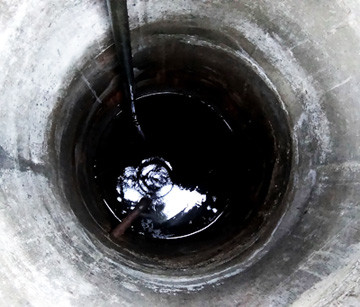
The importance of water purification depends on you specific circumstances and where your incoming water is fed from.
If you are thinking about UV for your household and your incoming water is fed directly from a UK towns mains supply then there is little or no need to use ultraviolet sterilisation (unless you have a specific reason to). Mains water is obviously rigorously tested and treated with a myriad of filtration and sterilisation methods including UV prior to water entering your household. Your incoming water supply has to adhere to a whole host of water quality standards which make it safe for human consumption.
Thats not to say UV cannot be implemented even in this situation. UV won’t harm or degrade water, it doesn’t use chemicals or require dosing of any other liquids so therefore is completely safe to use.
On the other hand if your water is being fed from a private supply such as a river, well or borehole then the importance of UV water purification becomes much greater.
The quality of Private water supplies can vary greatly even from day to day as typically it’s open to contamination from a whole host of sources including living organisms such as E.coli, coliforms, cryptosporidium and giardia which could potentially be extremely detrimental to your health.
Through the use of a correctly installed UV water purification system you can effectively protect yourself from these harmful organisms.
[su_spacer size=”40″]
UV light advantages and disadvantages
[su_spacer size=”30″]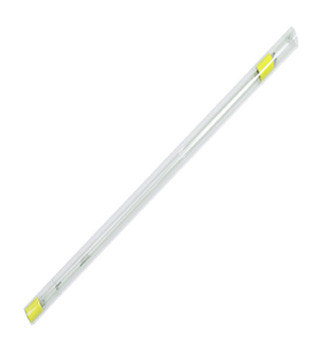 The main advantage of UV sterilisation is its effectiveness – remember (UV is capable of destroying 99.9% of living organisms within water). Coupled with this UV is also :
The main advantage of UV sterilisation is its effectiveness – remember (UV is capable of destroying 99.9% of living organisms within water). Coupled with this UV is also :
Simple to install :
- Installation work can be completed by any capable DIY’er.
Inexpensive to purchase :
- IWE’s UV purification range starts from just £47.43 + VAT.
Requires very little maintenance :
- Typical service is an annual replacement of the UV lamp.
The disadvantages of a UV water filter are that it does require electricity to function, therefore you will need to ensure you have a power source within the range of your installation to connect your system to when ready for operation.
Another thing to take into consideration is that your incoming water feed needs to be pre-filtered prior to passing through the filter, the reason for this requirement is to ensure that water passing through the UV is free of any particulates. To be completely effective the ultraviolet visible light emitted from the bulb must be able to clearly make contact with any micro organisms contained within the water, without adequate pre-filtration the organisms could potentially pass through your UV unharmed.
When assessing a suitable location for your water purifier, bear in mind the additional space required for the installation of a pre-filter.
Industrial Water Equipment supply both standalone and complete UV kits, our kits come with a choice of pre filters, housings, brackets and filter wrenches.
[su_spacer size=”40″]
UV Disinfection of Water
[su_spacer size=”30″]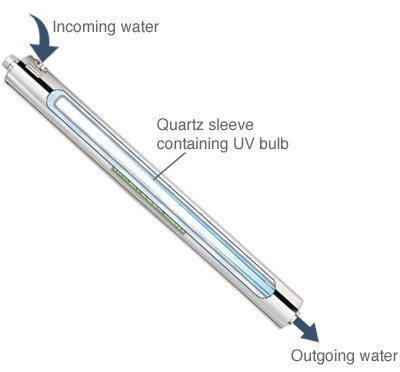 The disinfection of water though a UV is a straightforward process. If we could take a look directly inside a UV water filter whilst in operation we would be able see the sterilisation process in action.
The disinfection of water though a UV is a straightforward process. If we could take a look directly inside a UV water filter whilst in operation we would be able see the sterilisation process in action.
When ultraviolet light comes into contact with micro organisms passing through a UV’s reaction chamber the light damages the cells DNA structure. This process disables the reproduction ability of the effected organism meaning it cannot function, reproduce and most importantly cause infection. If the process is carried out using the correct specification UV system for the required output at the required dose rate then the treated water supply will be deemed safe to drink.
In order for your UV to be completely effective in this process there are a few things to bear in mind :
UV Bulb replacement
The output strength of the UV bulb will degrade over time, its important that your UV bulb is replaced annually, even if your bulb appears to be operating fine this replacement MUST be carried out. Many UV’s incorporate a countdown timer indicating the number of days left before a replacement bulb is required. If your UV has been purchased from Industrial Water Equipment then we will send you an email reminder 365 days following your purchase.
Quartz sleeve
The quartz tube is a protective sleeve which tightly fits around the UV bulb protecting it from coming into contact with water passing through the reaction chamber, in order for your UV to be completely effective the Quartz sleeve must be clean and free of any damage, contaminants or degradation. When replacing your UV bulb also take time to inspect the structure of the quartz sleeve, ensure it is clean and not damaged. If in doubt then replace the sleeve.
We supply replacement bulbs, sleeves and power supplies for a wide range of UV water filters from leading manufacturers, please refer to our UV spares page for more information.
UV Dose
The dose of a UV is the term used when describing the amount of contact time the UV light has in relation to the passing water supply through the reaction chamber. The slower the incoming feed the more contact time water has with the UV light, therefore the higher the dose. Additional factors also determine the dose rate of a UV such as the physical length of the UV and the intensity of the bulb used within the unit.
The quality of your incoming water feed can also have a detrimental effect on the UV dose which is why correctly sized and positioned pre filtration is required.
For maximum effectiveness it is recommend that a water test is performed prior to the purchase of a UV in order to correctly determine the ideal UV sterilisation filter for your application.
Please contact our water treatment engineers for advice on water testing and product sizing.
[su_spacer size=”20″]
Well Water Filters
[su_spacer size=”30″]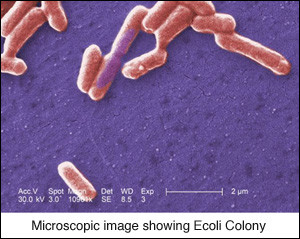 The variety of water borne bacteria and micro organisms found within well water can be numerous including :
The variety of water borne bacteria and micro organisms found within well water can be numerous including :
- E.coli
- Salmonella
- Cryptosporidium
- Coliform
- Giardia
Contamination occurs when infected water is either consumed directly or used in food preparation. Your incoming water supply has the potential to house these bacteria and many others if it is being drawn from a well or other private water supply.
Symptoms of contamination vary from diarrhoea and nausea, through to stomach cramps and vomiting. Some infections if not correctly diagnosed and treated have the potential to become lethal.
Treating well water with correctly sized UV sterilisation equipment reduces the chance of contamination from such viruses to almost zero – UV is capable of destroying 99.9% of living micro organisms within water.
The process for initiating UV treatment for well water is the same as treatment for any other incoming water source:
Ensure you have adequate pre treatment installed to remove any large particles within the water supply prior to water going into your UV. Larger particles (bigger than 5 micron) can give micro organisms potential hiding places when passing through a UV, this may allow organisms to pass through unharmed.
Have your water tested and choose a correctly sized water filter, adequate enough to treat your incoming water feed.
If you are unsure about sizing your UV please call on 01629 55839 and ask to speak to one of our engineers.
Annually replace your UV Bulb and perform periodic inspections of the pre-filtration, quartz sleeve, o-rings and connections to ensure correct operation.
[su_spacer size=”20″]
UV Systems for drinking water
[su_spacer size=”30″]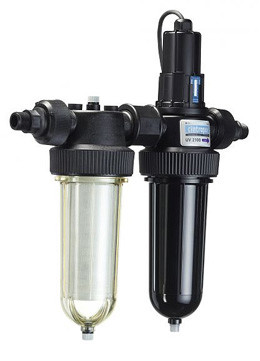 UV systems have a range of benefits when used in drinking water applications. Ultraviolet light will not taint or diminish the quality of your drinking water, it doesn’t require any additional dosing or treatment of your incoming water feed and requires very little maintenance, however there are a few points to bear in mind when attempting to install a UV in your home.
UV systems have a range of benefits when used in drinking water applications. Ultraviolet light will not taint or diminish the quality of your drinking water, it doesn’t require any additional dosing or treatment of your incoming water feed and requires very little maintenance, however there are a few points to bear in mind when attempting to install a UV in your home.
The first thing you will need to decide is where you intend to place your UV and ensure that you have adequate space not only for the UV but also for the pre filtration, remember that your filter will need to be placed close to a power outlet.
If you want your UV to be hidden out of sight then under the counter placement is an option, however you will need to bear in mind that due to the design of the majority of UV sterilisation systems (long and thin) this poses an added issue when annual replacement of the UV bulb or Quartz sleeve is required. Typical UV bulb replacement is performed by unscrewing one end of the UV to gain access to the bulb which then slides out from within the chamber. The UV bulb runs almost the entire length of the chamber, therefore you will need at least that length again in order to perform crucial replacement and servicing tasks.
If space is an issue then allow enough play in your connecting pipework to able to easily move or rotate your system enough to gain access to replaceable parts. Please also remember that when replacing parts your UV system will need to be drained down, ensure you are able to isolate your incoming water feed to perform these tasks.
Cintropur offer an alternative over the typical UV design which can prove to be very beneficial when fitment space is tight. Cintropur systems are much more compact and also offer combined pre filtration / UV within their range of sterilisation systems.
The Cintropur DUO UV (pictured) is a combined filter/UV with a maximum flow rate of 2 m3/hr and weighing just 2.8kg.

